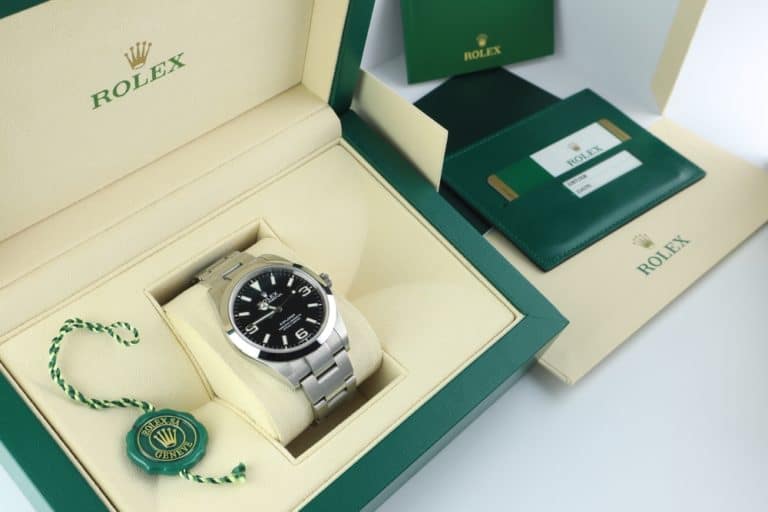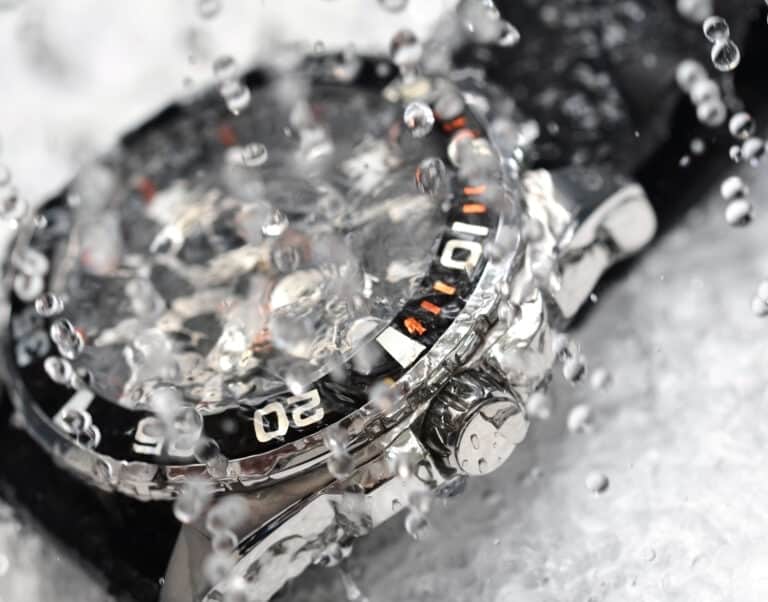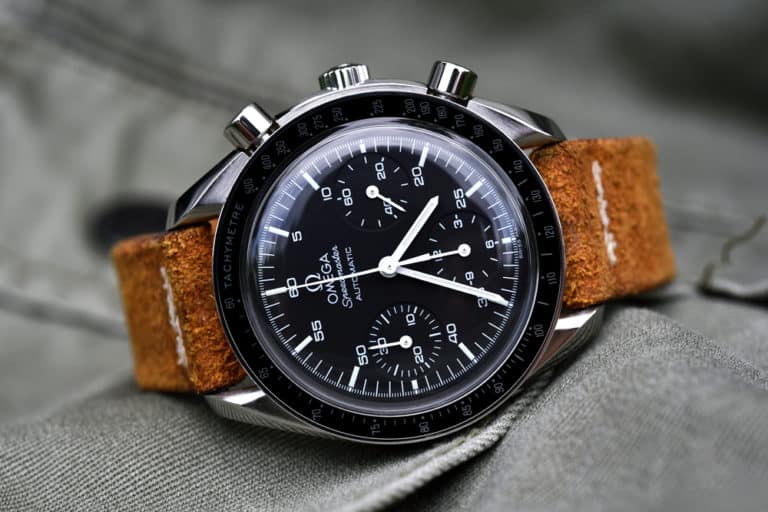Watches come in varying styles, and there is no shortage of advice on whether to wear them on the left or right wrist. In truth, I’ve tried wearing my watches on both sides and find that I prefer my non-dominant hand. However, what should you do? Should you wear your watch on the dominant hand?
Wearing a watch on the dominant hand is a personal preference and relates to whether the wearer prefers practicality or if they follow customs. The wearer may wear it on their dominant hand out of habit, learn placement from a parent, or find it easier to write or read the time more readily.
People might prefer their watch on the dominant or non-dominant hand for several reasons. Let’s explore practical, habitual, and psychological causes and examine the history behind these actions.
Wearing A Watch On Your Dominant Hand
There is no social rule or construct that dictates which is the best side to wear a wristwatch. Some left-handed people wear them on their left or right, and the same applies to right-handed people. However, there are historical reasons that have a significant influence on these decisions.
Wristwatches made their first appearance in the military and aviation services. Most soldiers, and most of the population for that matter, were right-handed, so the first wristwatch catered to a right-handed style.
The wristwatch design allowed soldiers to note the time while writing without lifting their writing hand. Since they wore their watches on the left side, the watch’s crown was placed on the right side so they could adjust it more easily with the right hand.
Back then, it was necessary to wind your watch daily, denoted by many modern watches today still having a crown for setting the time. These principles were carried over from the military to the local populace and practiced for a long time afterward.
Moreover, since most people were right-handed, they would use their right side instead of their left when they did manual labor. Since watches operated using wound springs, they were susceptible to damage from blunt force knocks, shocks, and sharp blows.
Having a watch on the dominant hand-carried a risk of it becoming damaged during physical labor. Wearing a watch on the left meant workers could keep their watch away from a swinging hammer or pickaxe, and they didn’t have the watch strap constricting their wrist.
By the time battery-powered quartz watches arrived on the market, a century had passed, and wearing a watch on the left wrist became a societal norm that remains practiced even today.
Are There Strict Social Rules For Wearing Watches?
There are no social rules that dictate on which side to wear a watch. People have varying reasons for why they wear them on a specific side. It makes it easier to write, do physical labor, and see the time; it may be a habit learned from a parent, or it prevents the crown from digging into the hand.
The Dominant Hand Is More Readily Available A Watches
The reasons why people wear their watch on a specific side can often be traced to the time before they started wearing watches. Some people prefer wearing it on their dominant hand because they use that hand to write, point, and search for things, meaning it’s always in plain sight.
Their left hand is less dexterous and, as such, will take a backseat and hold bags, books, or packages, placing the left hand out of sight for the most part. As such, they like to have their watch on their dominant hand where they can glance at it readily.
The Crown Of A Watch Can Dig Into Your Hand
Many wristwatches still have crowns on the watch’s right side because most manufacturers assume the wearer is right-handed. However, some watches cater to left-handed wearers, too.
Right-handed people who wear their watch on the left wrist might want their crown to be on the downhill side, the side closer to the wearer’s hand. It makes it easier to operate the watch with their right hand – their dominant hand – without having to remove the watch first.
Wearing the watch on the right wrist while the crown is on the left will irritate some people as moving or working with their right hand will cause the crown to dig into their hand.
However, if the crown were on the right, the wearer would need to reach across the watch with their left hand, which blocks the wearer’s view of the watch face.
Considering everything, the wearer should do what is most comfortable to them.
People Learn Their Habits From Their Parents
Some people may say, “I’ve always done it this way; I couldn’t tell you why,” or “I saw my dad wear it like this growing up, and so I did the same.”
In this case, there’s no logical or practical reason for choosing to wear their watch on a specific side. In fact, it may be more emotional and psychological because those same people also say, “wearing it on my other side would feel so wrong!”.
They may decide to change it later for other reasons, but sometimes the reason is pretty straightforward!
Some People Believe It’s Logical Rather Than Customary
Rather than trust it as a customary norm, some wearers see the non-dominant hand as the logical and correct choice. It just happens that, since most people are right-handed, it will lend up on the left wrist for the most part.
Some Wearers Favor Practicality When Wearing Their Watches
It’s practical for some to have the watch on the non-dominant hand so that the dominant hand is free to write without hindrance.
For instance, left-handed people may wear their watch on their right wrist because it prevents them from dragging their watch across the desk as they write. Furthermore, it ensures the crown faces upward, reducing its exposure to water when washing hands.
Habits Dictate That You Wear Your Watch On The Left Or Right
People may also choose to wear their watch on their dominant hand not out of practicality but rather out of habit.
We don’t decide to become left or right-handed; instead, we develop the habit of using our left or right hand. Similarly, our habits tell us that our dominant hand is the best for wearing our watch.

Conclusion
People may prefer their watch on their dominant hand because they can more readily glance at the time. It also feels more comfortable because their body has formed a habit that states their dominant hand is the best tool for accomplishing a task. It may also be for practical, historical, or family reasons.
Sources
- https://www.hodinkee.com/articles/how-the-left-wrist-became-the-right-wrist-for-watches-2
- https://www.quora.com/Why-do-I-feel-more-comfortable-wearing-my-watch-on-my-dominant-hand
- https://www.quora.com/What-does-wearing-a-watch-in-right-hand-psychologically-mean
- https://www.quora.com/What-happens-if-we-wear-a-watch-on-the-right-hand
- https://www.quora.com/What-percentage-of-people-wear-their-watch-on-their-right-hand
- https://www.quora.com/Why-is-a-right-handed-person-supposed-to-wear-a-watch-on-their-left-wrist







